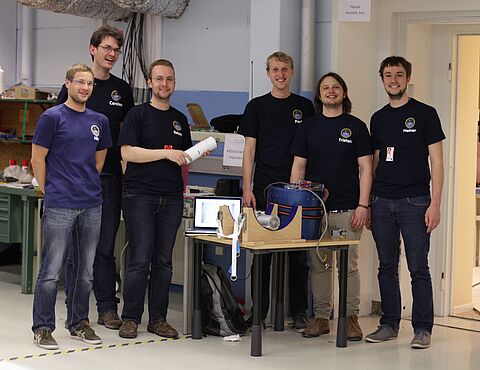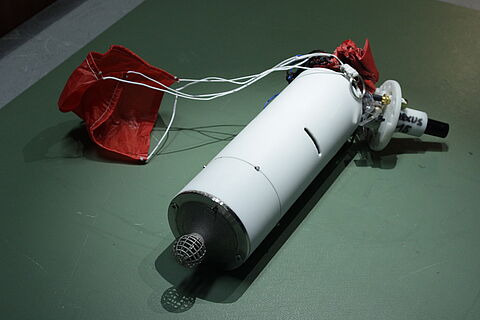MEsurements of the D-region plasma USing Active falling plasma probes
The MEDUSA experiment, as a part of the REXUS (Rocket-EXperiments for University-Students) project, develops a new in-situ technique probing the lower ionosphere plasma by two daughter payloads.
Relative changes of the lower D-region ion density were obtained by using a so called fixed biased Langmuir probe. The Experiment was launched on board the REXUS-15 sounding rocket on the 28.5.2014 at 12:00 LT from the Esrange near Kiruna in northern Sweden. The daughter payloads were released at 76 km on the upleg of the rocket flight and reached an apogee of about 80.5 km. The ejection and flight stabilization mechanism developed by the students operated reliable and one probe was recovered successful. The obtained results show increasing ion density with increasing altitude as expected for the altitude range. With further development of the measuring electronics this technique can be used to investigate small scale structures in the ion density.
The scientific scope of MEDUSA is measuring small scale fluctuation in the plasma density of the D-region. This enables the investigation on the physics of the atmospheric phenomena like polar mesospheric winter echoes (PMWE), which are radar echoes in the range of 55-80 km. The possible occurrence of PMWE during the REXUS campaign is monitored by MAARSY and the ESRAD radar, which is located directly at Esrange Space Center.
Contact: Heiner Asmus
Student Homepage: http://www.medusa-experiment.de














